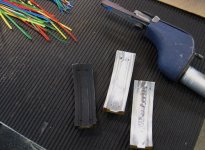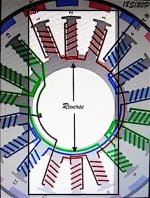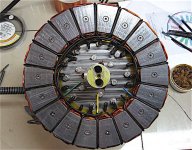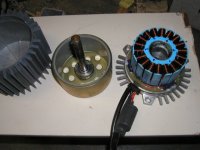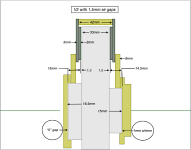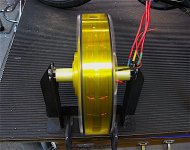I'm going to try to round off the edge of the plate a little more, to help with insulation, but this titanium is the
toughest darn stuff!
I've been thinking about the bearings again too,.. it was suggested before that I use tapered roller bearings instead of
the ball bearings that are in there now. I was reassured that the ball bearings were sufficient, but the more I think of
it, the more I have to wonder.
I think that most of the axial's that I've seen use rollers. And the ball bearing was never intended to be used in axial
loads, which sometimes reach 300+ lb. magnet strength. Although, once the motor is together, it should be even.
Still, just in case the problem this motor is having is two fold, weak stator plate, and side loaded bearings, I decided
that it might be worth taking a look at some tapered bearings to see if I could find a match.
As luck would have it, there is a pair of rollers that will fit perfectly ID and OD, with the exception of being slightly
wider by a few millimeters. I should be able to turn a little more clearance for them in the axle and caps, and may
even be able to eliminate any shims.
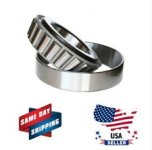
Another advantage to using tapered rollers is that they come directly apart, so theres no 'pulling' the bearings off of
a press fit, when taking the motor apart,.. the two sides stay in place, and can even be bonded there.
They're cheap enough, so I ordered a pair out, and we'll see how all that pans out when they get here. I might have to
remake the non-drive bearing cap, but that one is pretty wimpy anyway, and always needed to be redone.




